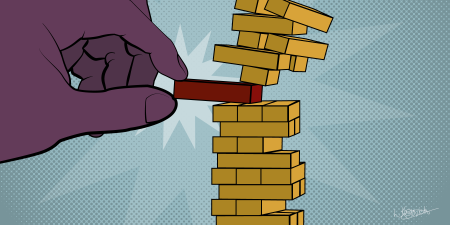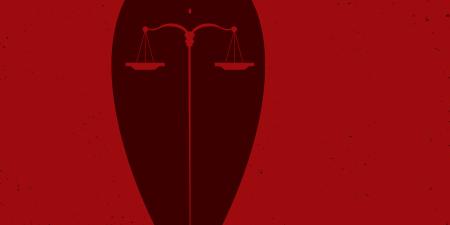In 1962, economist Hawkins Stern of the Stanford Research Institute published a paper titled “The Significance of Impulse Buying Today.”1 Aware of the influence of behavioral psychology on consumer habits, the William Wrigley Jr Company commissioned this seminal study in order to gain insights that would later shape strategies that vastly improved product sales.
For anyone who has ever stood at a checkout counter and wondered about the practice of placing chewing gum on it, a review of Stern’s work is highly recommended. The idea behind this strategy is that, by the time consumers reach a checkout counter, their decision-making ability has been so exhausted by the act of making choices about their other purchases that they are more vulnerable to impulsive buys, such as gum. Intriguingly, some of the concepts outlined in this piece find application not only in economics but also in medicine. For instance, the phenomenon of decision fatigue outlined above is also known to impair clinicians’ prescribing ability. One manifestation of this phenomenon is the increased likelihood that primary care clinicians will prescribe antibiotics for upper-respiratory tract infections towards the end of a clinic day as opposed to the beginning of one.2
The phenomenon of decision fatigue is but one example of many that fall under the umbrella of behavioral psychology, a field that studies the connection between the systematic tendencies in our thinking and the way that these tendencies respond to environmental stimuli and, ultimately, manifest as actions. In essence, whether conscious or subconscious, deliberate or accidental, heuristics and biases are vital factors in the everyday decision making of physicians and patients alike.
The field of behavioral psychology finds its application in behavioral design and choice architecture, powerful tools with which to influence the practice of health care professionals and the behaviors of patients. When choice architecture is designed to influence behavior in a predictable way but without restricting options, it is often called a nudge.3 In September 2015, The White House issued an executive order directing federal agencies to incorporate behavioral science into their programs,4 thereby establishing the formation of “nudge units” or behavioral design teams. By influencing the behaviors of citizens and government employees, these units were able to improve outcomes in many areas, including energy conservation,5 personal savings,6 and completion of college financial aid applications.7
Although medicine has yet to implement behavioral psychology in a systematic or scalable way, examples of its successful application in this field are compelling. In order to improve health care value and outcomes and advance knowledge about how to best implement nudges, the University of Pennsylvania launched its Penn Medicine Nudge Unit in 2016.3 After studying prescriber behavior and recognizing the power of default options in the electronic health record, this unit was able to increase prescribing rates for generic medications from 75% to 98% across all University of Pennsylvania Health System outpatient clinics during the 7-month postintervention period.8 The team also studied the process by which referrals to cardiac rehabilitation were placed at the same institution, and, by changing the default system for rehab from opt-in to opt-out, was able to increase the rate of cardiac rehabilitation referrals from just 15% to an impressive 80%.3 The influence of default options has also been observed in the setting of organ donation, for which countries’ change from opt-in to opt-out policies has increased donation rates by 16% to 30%.9,10 However, an Institute of Medicine committee recommended against changing the American organ donation policy to an opt-out system due to the concern that the conditions for adoption of an “ethical system of presumed consent” are lacking.11 These examples serve to demonstrate the influential power that behavioral design possesses and the issues of ethical complexity that accompany this power.
At the intersection of medical practice and ethics, we are confronted with some compelling questions that warrant careful consideration from a behavioral psychology perspective: Do we understand the choices we are making and why we are making them? Are we working in the best interest of our patients, or are our actions decided by seemingly arbitrary factors such as the time of day or the order in which choices appear on our computer screens? Furthermore, when behavioral architecture is used to change behavior in care delivery, how can the ethical application of such interventions be ensured?
It is therefore incumbent upon those of us in health care communities to understand choice architecture and to harness it in an ethical way in order to encourage the practice of evidence-based medicine, maximize efficiency, reduce clinician burnout, improve outcomes for patients, and strengthen the patient-clinician relationship. This issue of the AMA Journal of Ethics addresses questions related to health care applications of behavioral architecture, key among them being whether it is justifiable to use nudges—to make self-determination illusory—to motivate a specific health outcome. It also explores the influence of behavioral architecture on reasoning and its role in professional development, as well as 10 things health professionals and patients should know about the future of behavioral design in health care.
References
- Stern H. The significance of impulse buying today. J Mark. 1962;26(2):59-62.
- Linder JA, Doctor JN, Friedberg MW, et al. Time of day and the decision to prescribe antibiotics. JAMA Intern Med. 2014;174(12):2029-2031.
- Patel MS, Volpp KG, Asch DA. Nudge units to improve the delivery of health care. N Engl J Med. 2018;378(3):214-216.
-
Executive order—using behavioral science insights to better serve the American people [press release]. Washington, DC: Office of the Press Secretary, The White House; September 15th, 2015. https://obamawhitehouse.archives.gov/the-press-office/2015/09/15/executive-order-using-behavioral-science-insights-better-serve-american. Accessed March 23, 2020.
- Allcott H. Social norms and energy conservation. J Public Econ. 2011;95(9-10):1082-1095.
- Thaler RH, Benartzi S. Save more tomorrow: using behavioral economics to increase employee saving. J Polit Econ. 2004;112(suppl 1):S164-S187.
- Bettinger EP, Long BT, Oreopoulos P, Sanbonmatsu L. The role of application assistance and information in college decisions: results from the H&R Block FAFSA experiment. Q J Econ. 2012;127(3):1205-1242.
- Patel MS, Day SC, Halpern SD, et al. Generic medication prescription rates after health system-wide redesign of default options within the electronic health record. JAMA Intern Med. 2016;176(6):847-848.
- Abadie A, Gay S. The impact of presumed consent legislation on cadaveric organ donation: a cross-country study. J Health Econ. 2006;25(4):599-620.
- Johnson EJ, Goldstein DG. Defaults and donation decisions. Transplantation. 2004;78(12):1713-1716.
-
Childress JF, Liverman CT, eds; Committee on Increasing Rates of Organ Donation. Organ Donation: Opportunities for Action. Washington, DC: National Academies Press; 2006.



